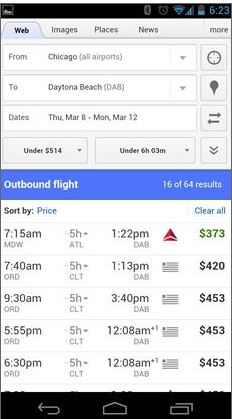- Have any questions?
- Office: +1 (650) 345-8510
- Mobile: +1 (650) 576-6916
- norm@traveltechnology.com
How OS Travel Buttons (iTravel, Google Travel) Will Change the Mobile Travel Landscape
Why Voice Interaction Will Change Mobile Travel
January 31, 2012How Can Regional TMCs Adapt to New Financial Models?
April 30, 2012It has been nearly 2 years since Apple filed the patent for iTravel, a comprehensive effort to capture the full cycle of travel booking, itinerary management and airport check-in. Last spring, Google completed its acquisition of ITA software and last September Google launched Flight Search while continuing to add features to its Hotel Finder. Also last year, RIM BlackBerry private labeled WorldMate creating BlackBerry Travel. These trends cannot be ignored, but how exactly will native OS travel apps transform the travel process?
The key will be how will these initiatives fit into the current travel ecosystem. Naturally there is some fear that a native OS travel button may lead to the OS provider taking a piece of the distribution pie. With the current airline direct model of the Google Flight Search, the mobile button could lead to more disintermediation. It is essential to recognize that there is an important connection between the emergence of intelligent agents (Siri, Google Assistant) and the OS travel button. My previous post described how I see voice UI impacting every aspect of the travel process. Combining voice assistance and a native OS travel button could transform the mobile travel experience.
It is important to note that all these initiatives are focused on the traveler UI.It is unlikely any OS travel button would provide a complete m-commerce platform, for travel but rather these buttons would more likely act as a meta-search funnel and hook up into an existing channel (OTA, direct supplier sites). Controlling the front-end funnel for travel does have tremendous implications for the industry. Apart from the obvious competition this creates for OTAs, Meta-Search, Itinerary aggregators (e.g. TripIt) and even corporate booking platforms (Concur, Rearden Commerce), creating an iTravel button directly challenges the traditional search metaphor promoted by OTAs and Meta-search companies over the last 10 years. There have been numerous articles written over the past few years highlighting the consumer’s unhappiness with the current UI for Web-based travel such as this recent TNOOZ article. A major weakness in the way many travel companies have approached mobile is to simply bring Web functionality to the mobile platform without recognizing that mobile plays a different role in the travel process. Mobile search is about location, relevance and context. Native OS travel buttons will likely take advantage of this triad and deliver a superior experience to the user.
So if OS travel buttons are inevitable, what does the travel industry need to do to prepare for their impact. Rather than spending money on lobbying efforts such as the FairSearch Coalition, the key industry players should be funneling a greater amount of R & D into their mobile platforms. This includes:
- Focus mobile efforts on location, relevance and context
- Commit R & D dollars to investigate creating your own Siri like functionality for a travel voice UI
- Consolidate functionality so that a single app or mobile Web can do everything the travel needs. For example, including airport navigation, merchandising, itinerary aggregation (for components booked through the site and through other sources), real-time destination information and long tail services.
- Partner with other travel value chain entities on a mash-up of functionality
- Explore new ways to collect personal preferences (opt-in) to deliver more relevant content
- Create a skunk works team to explore next generation mobile capabilities that is separate form your mobile product roadmap group
- Reach out to the big boys – Apple, Google and Microsoft to explore how to support the backend for their travel OS initiatives.
The travel industry cannot afford to have an inward looking view of mobile, but must recognize that the OS trends shape consumer behavior. The sooner your organization starts planning for the OS travel button, the better prepared you will be when it emerges in the market.



